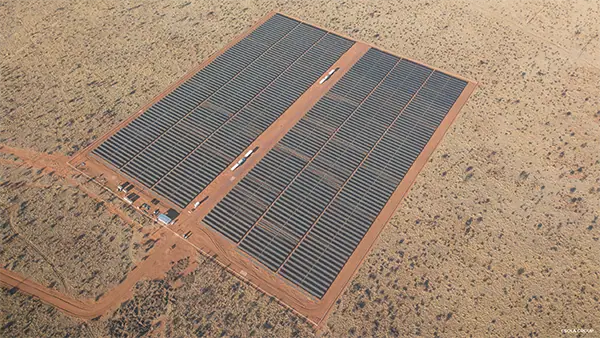Our Terms & Conditions | Our Privacy Policy
Amazon is the largest corporate purchaser of renewable energy globally for the fifth year in a row
WITH more than 600 projects worldwide, Amazon is also supporting solar and wind initiatives in regions with polluted grids to help curb emissions.
Building new renewable energy projects—including solar and wind—is one of the most effective ways to slow the speed of climate change. As part of Amazon’s Climate Pledge commitment to reach net-zero carbon emissions by 2040, we’re supporting these efforts on a global scale.
For the fifth year in a row, It was the largest corporate purchaser of renewable energy globally, according to Bloomberg NEF, and has supported more than 600 wind and solar projects to date.
In many cases, these projects wouldn’t be built without Amazon’s support, and together they will be capable of powering the equivalent of 8,3-million US homes.
Through these projects, it helps match the electricity consumed by its operations and brings net-new renewable energy to the grid, making it more sustainable and reliable for everyone.
Amazon is also focused on placing projects on grids that rely heavily on carbon-intensive energy sources, where a solar or wind farm can have an even greater impact on avoiding carbon emissions and help phase out less sustainable energy options.
To date, Amazon has invested in more than 40 utility-scale solar and wind projects across countries with a mix of fossil fuel use and high emissions, including Australia, China, Greece, India, Indonesia, Poland, and South Africa, and states like Louisiana and Mississippi.
In South Africa, its 10-megawatt solar plant is in the Northern Cape Province, the largest province in the country. The plant is expected to generate up to 28 000 MWh of renewable energy per year, which equals the annual electricity consumption of over 8 000 average South African homes. Amazon Web Services (AWS) also plans to invest R46-billion in the Cape Town region by 2029.
“Amazon isn’t just the top corporate purchaser of solar and wind, we’re also prioritising projects in the locations where they can have the biggest impact on curbing emissions and improving the local environment,” said Amazon chief sustainability Officer Kara Hurst.
“When it comes to addressing climate change, speed and location matter. From collaborating on new energy policies, to accelerating renewables in underserved regions, Amazon is working to help decarbonise grids around the world as quickly as possible.”
Building wind and solar projects on polluted grids is known as carbon matching, and it has the potential to significantly amplify the environmental benefits of a renewable energy project. According to WattTime, an environmental tech nonprofit, the world could avoid five gigatons of carbon dioxide by optimising where wind and solar projects are located.
Amazon is focused on putting that practice into action.
For example, in India, where the grid is primarily powered by fossil fuels, Amazon has invested in nine utility-scale solar and wind farms. By locating these projects in India, they have the potential to avoid 55 times more carbon emissions annually than if the projects were located in Sweden, one of the world’s most decarbonised power grids, according to publicly available sources and Amazon calculations.
Images are for reference only.Images and contents gathered automatic from google or 3rd party sources.All rights on the images and contents are with their legal original owners.



Comments are closed.